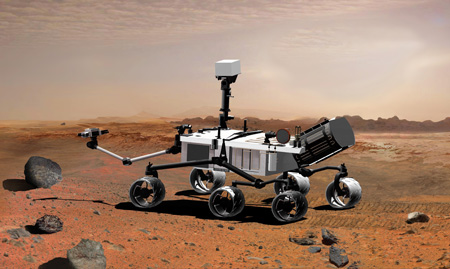
How ORISE is Making a Difference
ORISE Provides Radiation Expertise as NASA Prepares Mars Science Laboratory Launch
The Oak Ridge Institute for Science and Education (ORISE) has played a key role in preparing the civilian and military emergency medicine communities in advance of the 2011 launch of the Mars Science Laboratory rover by the National Aeronautics and Space Administration (NASA) and the California Institute of Technology.
As part of the U.S. Department of Energy's (DOE) Advanced Launch Support Group, experts from the Radiation Emergency Assistance Center/Training Site (REAC/TS) are educating emergency personnel in at least five hospitals on external and internal decontamination and providing technical review and comments on NASA planning documents.
REAC/TS personnel are also providing medical/health physics support during launch preparation activities, on-site during and after the launch, as necessary.
REAC/TS provided similar support to NASA’s 1997 launch of the Cassini space probe, the October 1990 Ulysses launch, the October 1989 Galileo launch, and most recently the 2006 New Horizons deep space probe launch to Pluto.
New Horizons, a 1,000-pound, grand-piano-sized probe, is powered by the decay of 24 pounds of plutonium pellets as it journeys on a three-billion-mile, nearly 10-year trek to Pluto then Charon, Pluto’s primary moon. New Horizons was launched on a one-way trip into space and will not return to Earth.
While the odds were against a radiation accident occurring either during launch preparations or the launch itself, NASA and DOE enlisted the expertise of REAC/TS health physicists and physicians to prepare emergency response personnel on the correct techniques in the event of an anomaly.
